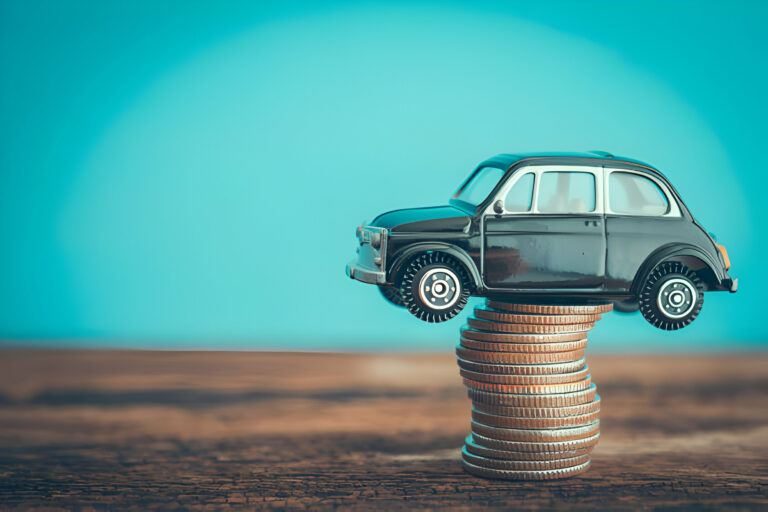Insuring your Collectible: A Comprehensive Guide
Have you ever stopped to think about what would happen if something happened to your precious collectibles? It’s a scary thought, right? Well, that’s where insuring your collectibles comes in. It’s like having a safety net for your valuable items. You see, these collectibles aren’t just things we own; they hold sentimental value and often represent years of collecting and memories.
Without insurance, we’re leaving them vulnerable to accidents, theft, or damage. Insuring our collectibles ensures that we can protect our investments and continue to enjoy them for years to come. It’s like giving our treasures a little extra security blanket, and in my opinion, it’s absolutely essential.
Why Insuring your Collectible
Without proper insurance coverage for your collectibles, you’re essentially leaving them unprotected against various risks. Firstly, there’s the risk of physical damage. Whether it’s a natural disaster like a flood or a fire in your home, accidents can happen unexpectedly, and without insurance, you’d be left to bear the financial burden of repairing or replacing your damaged items.
Secondly, there’s the risk of theft. Unfortunately, theft is a sad reality, and valuable collectibles can be prime targets for thieves. Without insurance coverage, if your collection is stolen, you could suffer significant financial losses.
Thirdly, there’s the risk of loss due to unforeseen circumstances. Life is unpredictable, and sometimes things happen that are out of our control. Whether it’s a break-in, a house fire, or even a simple accident like dropping a valuable item, without insurance, you’d be left to deal with the consequences on your own.
Overall, not having proper insurance coverage for your collectibles exposes you to a range of risks that could result in substantial financial losses and emotional distress. It’s like leaving your front door unlocked; you’re inviting trouble. That’s why it’s crucial to ensure your collectibles are properly insured to protect yourself against these potential risks.
Understanding the Value of Your Collectibles
When it comes to understanding the value of your collectibles, there are a few key things to consider. Firstly, let’s talk about how to determine their value. One way to do this is by looking at market value. This is the price that someone would be willing to pay for your collectible in the current market. It’s often influenced by factors like rarity, condition, and demand.
On the other hand, there’s sentimental value. This is the emotional significance that your collectible holds for you personally. It might be a family heirloom passed down through generations or an item that reminds you of a special memory. While sentimental value is priceless to you, it may not necessarily translate to a high market value.
Now, when it comes to assessing the value of your collectibles, it’s essential to consider both market value and sentimental value. Start by researching similar items online or consulting experts in the field to get an idea of their market value. Then, take into account any emotional attachment you have to the item to determine its sentimental value.
Additionally, consider factors like the condition of the collectible, its age, and any unique features it may have. These can all affect its value. And don’t forget to keep thorough documentation of your collection, including receipts, appraisals, and photographs, to help you accurately assess its worth.
By understanding both the market value and sentimental value of your collectibles and following these tips for assessment, you’ll be better equipped to make informed decisions about insuring and protecting your valuable items.
Types of Collectibles That Need Insurance Coverage
Various types of collectibles require specialized insurance coverage to protect their significant value and uniqueness. Here are some examples of collectibles that often need insurance protection:
- Rare Coins: Rare coins, especially those with historical significance or limited minting, require insurance coverage due to their high market value and collectible nature. Examples include ancient coins, rare mint errors, and limited edition coins.
- Artwork: Fine art pieces like paintings, sculptures, and other artistic creations are valuable collectibles that need insurance coverage to safeguard against damage, theft, or loss. Original works by renowned artists or unique pieces can be irreplaceable.
- Vintage Cars: Classic and vintage cars are sought-after collectibles that often require specialized insurance due to their rarity, historical value, and high monetary worth. These vehicles may appreciate over time, making proper insurance crucial for protection.
- Jewelry: Precious jewelry items such as rare gemstones, antique pieces, or designer collections need insurance coverage to protect against theft, damage, or loss. Jewelry with sentimental value or unique designs may require tailored insurance policies.
- Stamps and Postcards: Rare stamps and postcards from historical periods or limited editions are collectibles that can hold significant value. Insurance coverage is essential to protect these delicate items from damage or theft.
These items need specialized insurance protection because standard homeowners’ policies may not provide adequate coverage for their full value. Collectibles like rare coins, artwork, vintage cars, jewelry, stamps, and postcards often appreciate in value over time and require specific appraisal methods to determine their worth accurately. Specialized collectibles insurance policies offer comprehensive coverage tailored to the unique risks associated with these valuable items, ensuring collectors have peace of mind knowing their investments are adequately protected against unforeseen events.
Factors Affecting Collectibles Insurance Premiums
When it comes to insuring your collectibles, there are several factors that can influence the insurance premiums you’ll pay. Let’s break it down:
- The value of the collection: The total value of your collectibles collection plays a significant role in determining your insurance premiums. The higher the value of your collection, the higher your premiums are likely to be. This is because insurers will need to provide more coverage to protect against potential losses.
- Type of collectibles: The type of collectibles you own can also impact your insurance premiums. Some items may be more prone to damage or theft than others, leading to higher premiums. For example, rare coins or artwork may require higher premiums than more common collectibles due to their higher value and risk factors.
- Storage conditions: How you store your collectibles can also affect your insurance premiums. Collectibles that are stored in a secure, climate-controlled environment are less likely to suffer damage or theft, resulting in lower premiums. On the other hand, if your collectibles are stored in a less secure or unprotected location, your premiums may be higher to account for the increased risk.
Now, let’s talk about some tips for minimizing insurance costs:
- Document your collection: Keeping thorough documentation of your collectibles, including photographs, appraisals, and receipts, can help prove the value of your items and potentially lower your insurance premiums.
- Invest in security measures: Installing security systems, such as alarms, surveillance cameras, and secure locks, can deter theft and reduce the risk of loss, leading to lower insurance premiums.
- Bundle your policies: Some insurance companies offer discounts for bundling multiple insurance policies together, such as homeowners or renters insurance with collectibles insurance. By bundling your policies, you may be able to save money on your premiums.
By understanding the factors that influence collectibles insurance premiums and following these tips for minimizing costs, you can ensure that you’re getting the best coverage for your collection at an affordable price.
Choosing the Right Insurance Coverage for Your Collectibles
When choosing the right insurance coverage for your collectibles, there are a few options to consider. Let’s break them down:
- Standard homeowners insurance: Many homeowners insurance policies offer some coverage for personal property, including collectibles. However, this coverage is often limited and may not provide sufficient protection for valuable or specialized collectibles. Standard homeowners insurance typically has coverage limits and may not cover certain types of collectibles or specific risks, such as accidental damage or theft outside the home.
- Specialized collectibles insurance: Specialized collectibles insurance policies are specifically designed to provide comprehensive coverage for valuable and unique collectibles. These policies offer higher coverage limits, broader coverage options, and additional protections tailored to the needs of collectors. Specialized collectibles insurance can cover a wide range of collectibles, including artwork, rare coins, jewelry, vintage cars, and more. These policies often include coverage for risks such as accidental damage, theft, loss, and even appreciation in value over time.
Now, let’s discuss how to select the most appropriate coverage for your individual needs:
- Assess your collectibles: Start by evaluating the value, type, and uniqueness of your collectibles. Consider factors such as their market value, sentimental value, and susceptibility to damage or theft.
- Review your existing insurance policies: If you already have homeowners or renters insurance, review your policy to understand what coverage it provides for your collectibles. Determine whether the coverage limits and protections are sufficient for your needs.
- Compare insurance options: Research and compare specialized collectibles insurance policies from different insurance companies. Look for policies that offer comprehensive coverage, high coverage limits, and tailored protections for your specific types of collectibles.
- Consider additional coverage options: Depending on your needs and budget, consider adding optional coverage enhancements to your policy, such as scheduled item coverage for individual high-value items, coverage for newly acquired collectibles, or coverage for exhibition or display purposes.
- Consult with an insurance agent: If you’re unsure about the best insurance coverage for your collectibles, consider consulting with an experienced insurance agent who specializes in collectibles insurance. They can help assess your needs, explain your options, and recommend the most appropriate coverage for your individual situation.
By comparing and contrasting options such as standard homeowners insurance vs. specialized collectibles insurance and considering factors such as your collectibles’ value and susceptibility to risks, you can select the most appropriate insurance coverage to protect your valuable collection.
Tips for Documenting and Appraising Your Collectibles
To document and appraise your collectibles for insurance purposes, follow these step-by-step instructions:
- Take detailed photographs: Start by taking clear, high-quality photographs of each of your collectibles from multiple angles. Be sure to capture any distinguishing features, markings, or signatures.
- Keep records of purchase receipts: Save receipts, invoices, or certificates of authenticity for each collectible, if available. These documents can help prove the value and authenticity of your items.
- Create an inventory list: Make a detailed inventory list of all your collectibles, including descriptions, dimensions, condition, and any relevant information about their history or provenance.
- Get professional appraisals: Consider hiring a qualified appraiser to assess the value of your collectibles. Look for appraisers who specialize in the type of collectibles you own and who have experience working with insurance companies.
- Update appraisals regularly: Keep appraisals up-to-date by having your collectibles re-appraised periodically, especially if their value has increased over time.
- Store documentation securely: Store all documentation, including photographs, receipts, inventory lists, and appraisals, in a safe and secure location, such as a fireproof safe or digital storage system.
- Review your insurance coverage: Review your insurance policy to ensure that your collectibles are adequately covered. Make any necessary updates or adjustments based on your documentation and appraisals.
Properly documenting and appraising your collectibles is essential for insurance purposes. Accurate documentation and appraisal can help ensure that you receive fair compensation in the event of loss, damage, or theft. By following these steps, you can protect your valuable collectibles and have peace of mind knowing that they’re properly insured.
Steps to Take in Case of Collectibles Damage or Loss:
If your collectibles suffer damage, theft, or loss, here are the steps to take:
- Assess the damage or loss: Take inventory of the affected collectibles and assess the extent of the damage or loss. Document the damage with photographs and notes.
- Notify your insurance company: Contact your insurance company as soon as possible to report the damage, theft, or loss. Provide them with detailed information about the incident and any documentation you have, such as photographs, receipts, or appraisals.
- File an insurance claim: Fill out the necessary paperwork to file an insurance claim for the damaged, stolen, or lost collectibles. Provide any additional documentation or information requested by the insurance company to support your claim.
- Work with an insurance adjuster: Your insurance company may assign an adjuster to assess the damage and determine the value of your collectibles. Cooperate with the adjuster and provide them with any information or documentation they need to process your claim.
- Protect remaining collectibles: Take steps to protect any remaining collectibles from further damage. This may include moving them to a safer location, implementing additional security measures, or temporarily storing them elsewhere until repairs can be made.
- Follow up on your claim: Stay in communication with your insurance company throughout the claims process and follow up as needed to ensure that your claim is processed in a timely manner. Keep records of all communications and documents related to your claim.
By following these steps and working closely with your insurance company, you can navigate the process of dealing with damage, theft, or loss of your collectibles and ensure that you receive fair compensation for your losses.
Comparing Insurance Providers for Collectibles Coverage:
When comparing insurance providers for collectibles coverage, consider the following factors:
- Coverage options: Look for insurance providers that offer comprehensive coverage options specifically tailored to collectibles, including coverage for various types of collectibles, such as artwork, rare coins, jewelry, and vintage cars.
- Coverage limits: Check the coverage limits offered by each insurance provider to ensure they align with the value of your collectibles collection and provide sufficient protection against potential losses.
- Specialized protections: Seek out insurance providers that offer specialized protections for collectibles, such as coverage for accidental damage, theft, loss, and appreciation in value over time.
- Reputation and financial stability: Research the reputation and financial stability of each insurance provider by reading reviews, checking ratings from independent agencies, and verifying their credentials and track record in the insurance industry.
- Customer service: Consider the quality of customer service provided by each insurance provider, including responsiveness, accessibility, and willingness to address any concerns or questions you may have.
- Premiums and deductibles: Compare premiums and deductibles from different insurance providers to find the best balance between cost and coverage. Be sure to consider any discounts or incentives offered for bundling policies or maintaining a claims-free record.
- Flexibility and customization: Look for insurance providers that offer flexibility and customization options, allowing you to tailor your policy to meet your individual needs and preferences.
- Claims process: Evaluate the claims process of each insurance provider, including how claims are filed, processed, and resolved. Choose an insurance provider that offers a streamlined and efficient claims process to minimize stress and hassle in the event of a loss.
By considering these factors and conducting thorough research, you can find the best insurance policy for your individual needs and ensure that your collectibles are adequately protected against potential risks.
FAQs About Insuring Collectibles
Here are some common questions and concerns about insuring collectibles, along with their answers:
-
What types of collectibles can be insured?
-
-
- Most insurance providers offer coverage for a wide range of collectibles, including artwork, rare coins, jewelry, vintage cars, antiques, memorabilia, and more.
-
-
What coverage limits are available for collectibles insurance?
-
-
- Coverage limits can vary depending on the insurance provider and the value of your collectibles collection. It’s important to review your policy carefully to understand the specific coverage limits for your items.
-
-
Are there any exclusions to collectibles insurance coverage?
-
-
- Some insurance policies may have exclusions for certain types of collectibles or specific risks. Common exclusions may include items used for business purposes, items kept in unsafe storage conditions, or collectibles with fraudulent provenance.
-
-
How are collectibles insurance premiums determined?
-
- Collectibles insurance premiums are typically based on factors such as the value of your collection, the types of collectibles you own, the level of coverage you select, and your location. Premiums may also be influenced by factors such as your claims history and the security measures in place to protect your collectibles.
-
Can I add collectibles coverage to my existing homeowners or renters insurance policy?
- Yes, many insurance providers offer collectibles coverage as an optional add-on to homeowners or renters insurance policies. However, this coverage may be limited compared to specialized collectibles insurance policies, so it’s important to review your options carefully.
Conclusion
Insuring your collectibles is essential to safeguarding your investments and cherished items. Throughout this comprehensive guide, we’ve covered key points such as understanding the value of your collectibles, types of insurance coverage available, factors affecting insurance premiums, and steps to take in case of damage or loss.
It’s crucial to recognize that collectibles hold both financial and sentimental value, making them worthy of protection. Without proper insurance coverage, collectors risk losing their investments and treasured possessions in the event of accidents, theft, or natural disasters.
Therefore, I urge you to take action and ensure that your collectibles are adequately insured. Start by assessing the value of your collection, researching insurance options, and selecting the most appropriate coverage for your individual needs. Document your collectibles, maintain up-to-date appraisals, and store important paperwork securely.
By proactively insuring your collectibles, you can enjoy peace of mind knowing that your prized possessions are protected against unforeseen risks. Don’t wait until it’s too late—take the necessary steps today to safeguard your collectibles for the future. Your cherished items deserve the best protection, so make sure they’re covered with the right insurance policy.




2 Comments
Comments are closed.